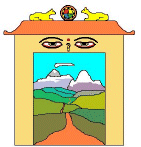
|
The Namche Conference: May 24-26,
2003 Participants and Presentations:
Anil Kumar Shrestha |
|
Mr. Anil Kumar Shrestha (Hetauda, Nepal) Faculty Member, Institute of Forestry, Hetauda, Nepal. Email: savetiger2002@yahoo.com AbstractA Preliminary Study on the Crop Depredation by Himalayan Tahr (Hemitragus jemlahicus) in Sagarmatha National Park.
Sagarmatha National Park is situated in the northeastern side of Kathmandu valley. The park holds vital importance for the conservation of the world's tallest mountain Everest region ecosystem as well as development of indigenous Sherpa people. Since the establishment of the park in 1976, it has succeeded in restoring many endangered wild flora and fauna species such as Musk deer (Moschus moschiferous), Snow leopard (Panthera uncia) and Himalayan Tahr (Hemitragus jemahicus). As a consequence, most wildlife populations have been increasing. Himalayan Tahr is one of these reportedly increasing species in Sagarmatha National Park. Consequently, Himalayan Tahr has rapidly destroyed the primary agricultural crop, potato (Solanum tuberosum) of Sherpa people.
The present study (carried out in 2000) reveals the primary causes for crop damage by Himalayan Tahr are due to the animal's population increase, habitat degradation and increasing number of livestock in the region. The problem is most severe in spring and summer when animal concentrations are high at the places like Thame valley, Namche, Khumjung and Mende. The current problem of crop depredation should be restricted as soon as possible because it causes conflict between park and people though the local people are getting direct and indirect benefits from the eco-tourism activities in the region. Harmonious relationships with local people are important for the sustainability of the park. Therefore, measures to reduce such incidents should be immediately carried out for the sustainability of the Sagarmatha National Park. To cope with the problem, following long-term activities such as clear understanding of the population dynamics of Himalayan Tahr needs to be studied and habitat improvement activities should be implemented. Management interventions such as buffer zone declaration, compensation to local people and diversification of their economy should be introduced to reduce park and people conflict. However, as an immediate measure, a guard should depute during the spring and summer months in the most affected areas. Also different types of physical barriers which protect the wild animal to enter in the crop field should be tested.
|
Email: info@namche.net
